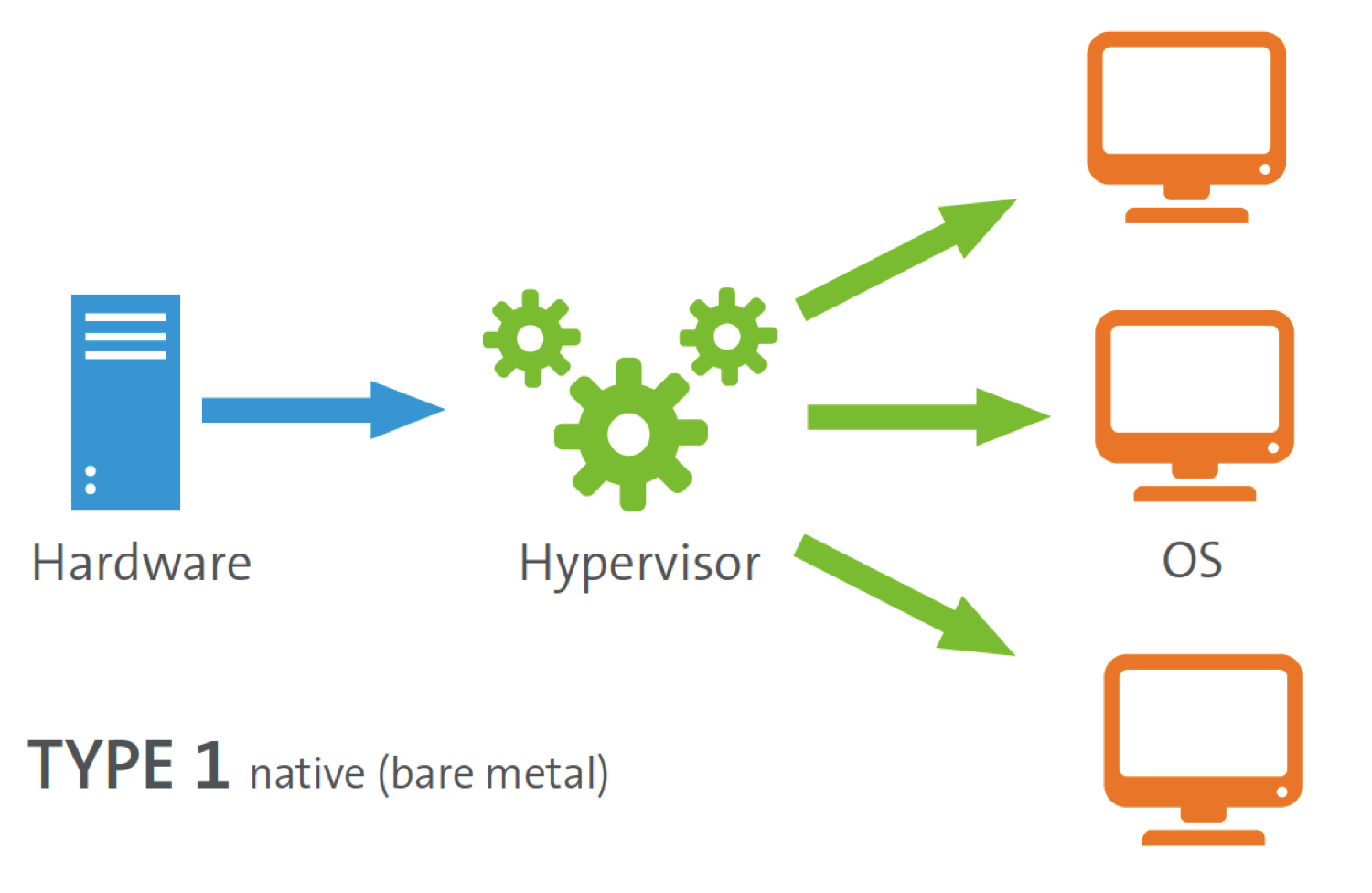
Photo by T A T I A N A on Unsplash
Virtualization Made Simple: A Comprehensive Guide
Unlocking the Power of Server Resources Through Virtualization Techniques
What is Virtualization?🤔
Virtualization is a powerful technique that enables a single machine to perform multiple tasks, optimizing resource utilization and reducing costs. Utilizing hypervisors, either Type-1 or Type-2, this method allows for the creation and management of multiple virtual machines on one physical server, enhancing scalability and efficiency in IT infrastructure management.
Before Virtualization⌚
Back in time when companies were buying servers to run their applications they were able to run only one application per server. This was getting very costly to the companies as the resources of the servers are not utilized properly. Let's say the email server of the company has the following specs : RAM: 4GB, Storage: 64 GB but only 1 GB ram and 10 GB of storage are being utilized by the server at any time and the rest of the resources remain underutilized. There was no way to utilize these resources and companies have to buy new servers if they want to run another application.

Virtualization helped solve this issue. With the help of Virtualization a particular server can be split into multiple ones and a new task can be assigned to each of them. All the child servers will use the resources of their parent server. All the child servers will now be called virtual machines. Before virtualization, the email server was able to do only email-related tasks but now with the help of Virtualization, the same email server can do the task of email, billing, etc. This altogether reduced the maintenance costs of the organizations.

How it's done?
The process of virtualizing hardware or creating multiple servers from one server is done via the hypervisor. A software that helps to create virtual machines and in turn manages them. There are two types of hypervisors:
Type-1 Hypervisors or Bare Metal Hypervisors
Type-2 Hypervisors or Hosted Hypervisors
Type-1 Hypervisor

These are called bare metal hypervisors because they directly run on the system hardware. It runs on the system hardware without any underlying operating system. Above it, we can create different virtual machines and all these will use the resources of system hardware and will be provided through the hypervisor. The hypervisor abstracts the CPU, storage, memory and networking resources of the physical host in the form of virtual machines.
Popular hypervisors include VMware ESXi and Microsoft Hyper-V.
Type-2 Hypervisor

This type of hypervisor is installed on top of the host operating system. As it is installed on the host operating system it acts as software. It doesn't have direct access to the hardware resources instead it asks the host operating system for it. The number of virtual machines we can create will depend on the available resources of the host operating system. Each virtual machine created is completely isolated from the others and it acts like it is the only operating system installed on the machine. They don't even have any idea about the host operating system on top of which they are running.
Popular hypervisors include Oracle VirtualBox and VMware Workstation.
Type-1 vs Type-2
| Type-1 Hypervisors | Type-2 Hypervisors | |
| Operation | Guest operating system and all the applications run on top of it. | Runs as an application on the host operating system. |
| Scalability | It provides better scalability as it doesn't have any dependencies. | Less as compared to type-1 as it depends on the host operating system for resource allocation. |
| System independence | It has direct access to the underlying hardware. | It is not allowed to directly access the underlying hardware. It has to interact with the host operating system for resources. |
| Performance | Higher performance as there is no middle layer. | Less as compared to type-1 as operating systems will also take up some resources, so it runs with extra overhead. |
| Security | It is more secure. | Less as compared to type-1 as any issue in the host operating system will affect it. |
Conclusion
In conclusion, virtualization is a powerful technique that allows organizations to optimize resource utilization, reduce costs, and improve scalability. By using hypervisors, either Type-1 or Type-2, multiple virtual machines can be created and managed on a single physical server. This technology has revolutionized the way businesses manage their IT infrastructure, enabling them to achieve higher efficiency and flexibility in their operations.

